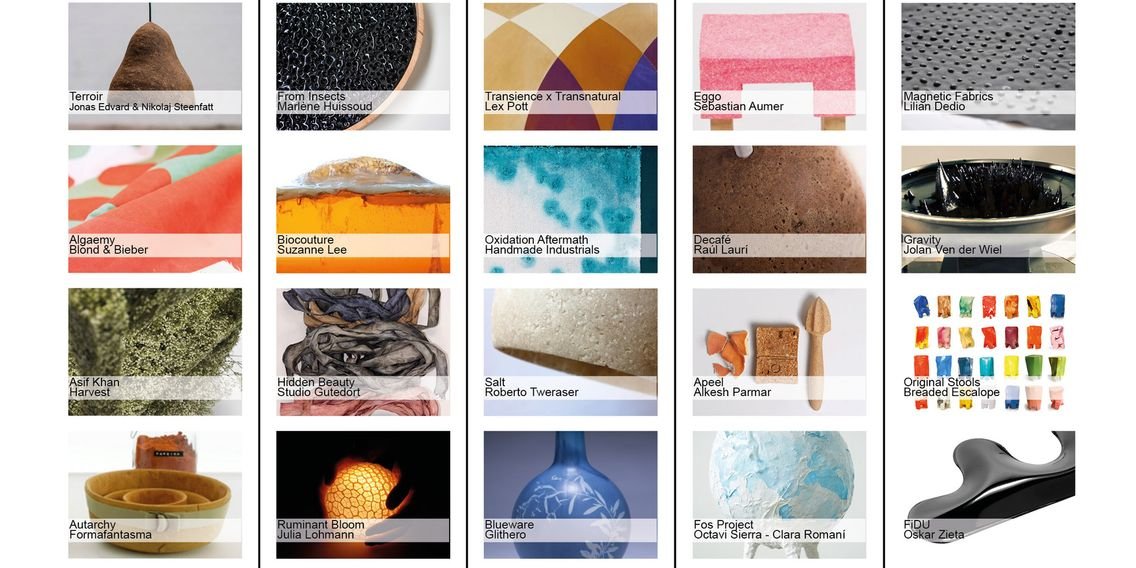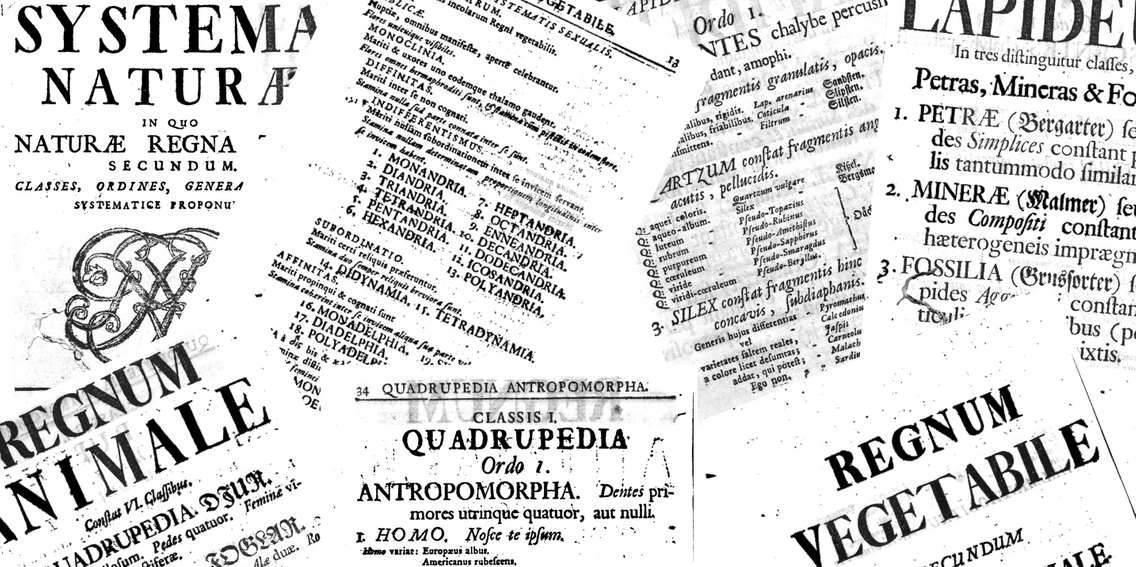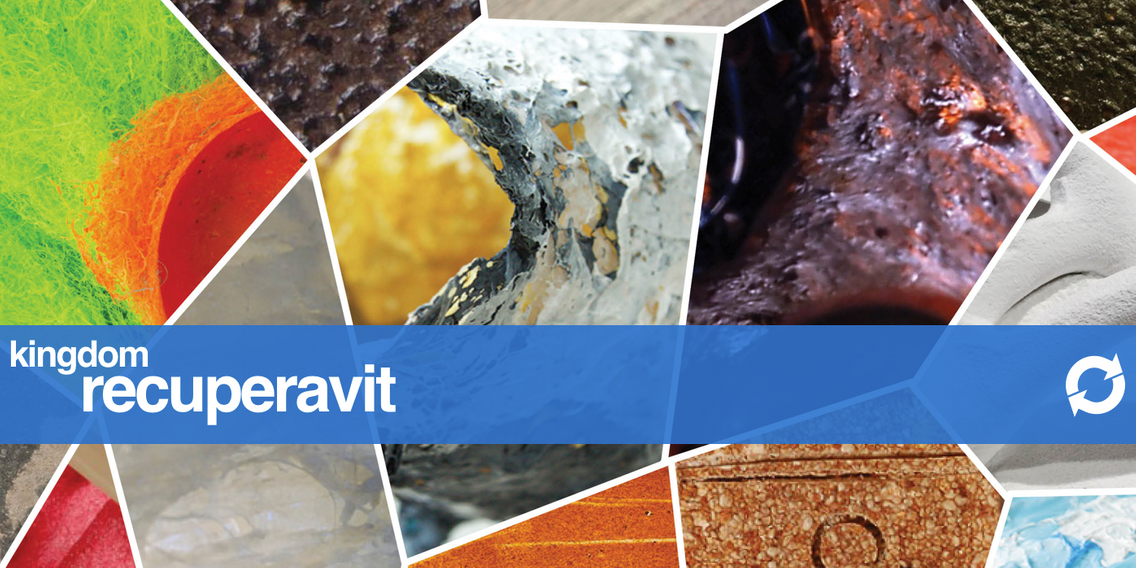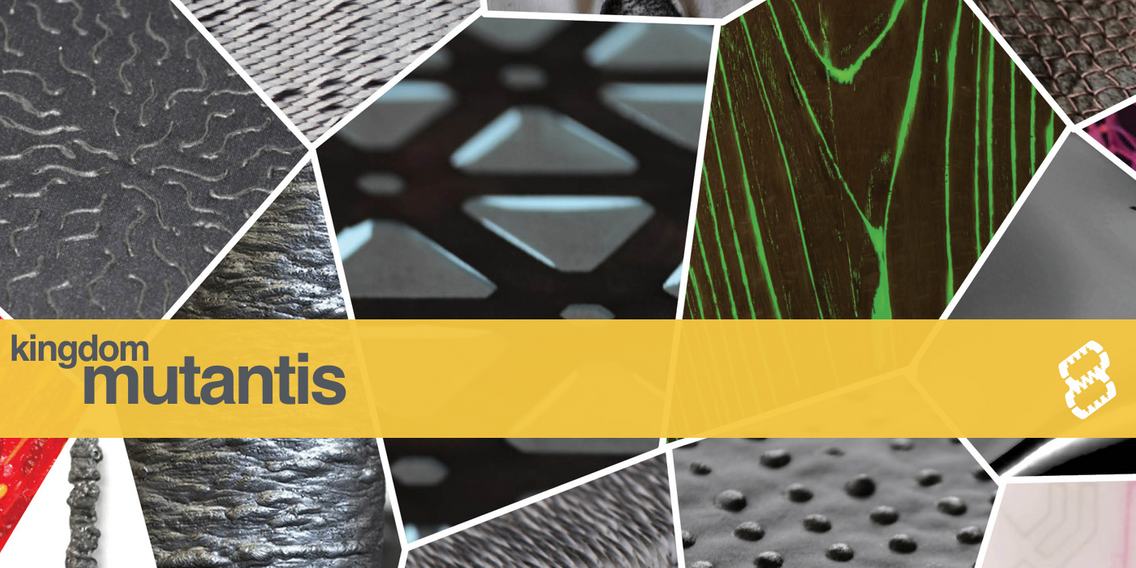
Do-It-Yourself Materials are created through individual or collective self-production experiences, often by techniques and processes of the designer’s own invention, as a result of a process of tinkering with materials. They can be new materials with creative use of other substances as material ingredients, or they can be modified or further developed versions of existing materials.
Rognoli, V., Bianchini, M., Maffei, S., Karana, E. (2015). DIY Materials. The Journal of Materials and Design, 86: 692-702. (S)
Classification

The DIY-Materials classification ground mainly on the sources of the material and their origins. For a correct definition of DIY-Materials, we noticed how important was for designers to highlight the sources used for their projects as starting material. If for the traditional materials, it is a certainty that plastic comes from petroleum and glass comes from silica, the origins of DIY-Materials are not so evident.
Ayala-Garcia, C., Rognol, V., Karana, E. (2017). Five Kingdoms of DIY Materials for Design. In Alive. Active. Adaptive: Proceedings of International Conference on Experiential Knowledge and Emerging Materials (EKSIG 2017), June 19-20, Delft, the Netherlands, pp. 222-234.

We took inspiration by the first biological classifications of the XVII century (e.g. the work of the Swedish botanist, zoologist and physician Carolus Linnaeus called Systema Naturae (Linnaeus, 1758). Linnaeus published what became for many years the standard biological classification of elements of earth, known as the Linnaean taxonomy.
Similar to Linnaean taxonomy, the DIY-Materials classification ground mainly on the sources of the material and their origins. We individuated five groups, and we called them kingdoms.

For every material development where the primary source for a DIY-Material derives from plants and fungi, (maintaining the original Linnaean taxonomy where “fungi” belong to the XXIV Class Cryptogamia). Materials under this kingdom differ from the others, mainly because they can derive from growing or farming techniques. Designers who create materials under this category collaborate with, for example, farmers and biologists.

Refers to all material sources derived from animals and bacteria. Note that bacteria were unknown when the Linnaean taxonomy appeared, but due to its behavior as a living organism, is possible to insert it into this kingdom. Those materials can be developed either by collaborating with living organisms or by using parts of the animals, like hair or bones.

It contains all DIY-Materials, which come from minerals: stones, sand, ceramics, clay, etc. Some current cases combine sources from other kingdoms, such as wool or cotton fabrics, but in a lower percentage compared with the primary constituent. Another feature in this kingdom is its strong link to crafts, probably because these types of materials have a long tradition in our material culture.

Comprise all sources society consider as waste but can transform into a valuable resource. They often come from plastic, metal or organic waste, sometimes as side products of industrial production. It is at the moment the most significant kingdom by the number of cases observed. Inside this kingdom, it is apparently visible the designer`s intention towards a more conscious and sustainable future.

This Kingdom includes the DIY-Materials created from different technological mixes and hybridization of industrial, interactive or smart sources. In this category, is possible to see combinations of varying material sources that come from another kingdom but evolve into something particular with the aid of any technology. This transformation represents a significant change in the material’s nature and behavior in comparison to other kingdoms.
 Do-It-Yourself Materials are created through individual or collective self-production experiences, often by techniques and processes of the designer’s own invention, as a result of a process of tinkering with materials. They can be new materials with creative use of other substances as material ingredients, or they can be modified or further developed versions of existing materials.
Rognoli, V., Bianchini, M., Maffei, S., Karana, E. (2015). DIY Materials. The Journal of Materials and Design, 86: 692-702. (S)
Do-It-Yourself Materials are created through individual or collective self-production experiences, often by techniques and processes of the designer’s own invention, as a result of a process of tinkering with materials. They can be new materials with creative use of other substances as material ingredients, or they can be modified or further developed versions of existing materials.
Rognoli, V., Bianchini, M., Maffei, S., Karana, E. (2015). DIY Materials. The Journal of Materials and Design, 86: 692-702. (S)
 The DIY-Materials classification ground mainly on the sources of the material and their origins. For a correct definition of DIY-Materials, we noticed how important was for designers to highlight the sources used for their projects as starting material. If for the traditional materials, it is a certainty that plastic comes from petroleum and glass comes from silica, the origins of DIY-Materials are not so evident.
Ayala-Garcia, C., Rognol, V., Karana, E. (2017). Five Kingdoms of DIY Materials for Design. In Alive. Active. Adaptive: Proceedings of International Conference on Experiential Knowledge and Emerging Materials (EKSIG 2017), June 19-20, Delft, the Netherlands, pp. 222-234.
The DIY-Materials classification ground mainly on the sources of the material and their origins. For a correct definition of DIY-Materials, we noticed how important was for designers to highlight the sources used for their projects as starting material. If for the traditional materials, it is a certainty that plastic comes from petroleum and glass comes from silica, the origins of DIY-Materials are not so evident.
Ayala-Garcia, C., Rognol, V., Karana, E. (2017). Five Kingdoms of DIY Materials for Design. In Alive. Active. Adaptive: Proceedings of International Conference on Experiential Knowledge and Emerging Materials (EKSIG 2017), June 19-20, Delft, the Netherlands, pp. 222-234.
 We took inspiration by the first biological classifications of the XVII century (e.g. the work of the Swedish botanist, zoologist and physician Carolus Linnaeus called Systema Naturae (Linnaeus, 1758). Linnaeus published what became for many years the standard biological classification of elements of earth, known as the Linnaean taxonomy.
Similar to Linnaean taxonomy, the DIY-Materials classification ground mainly on the sources of the material and their origins. We individuated five groups, and we called them kingdoms.
We took inspiration by the first biological classifications of the XVII century (e.g. the work of the Swedish botanist, zoologist and physician Carolus Linnaeus called Systema Naturae (Linnaeus, 1758). Linnaeus published what became for many years the standard biological classification of elements of earth, known as the Linnaean taxonomy.
Similar to Linnaean taxonomy, the DIY-Materials classification ground mainly on the sources of the material and their origins. We individuated five groups, and we called them kingdoms.





